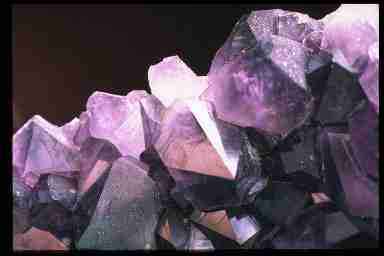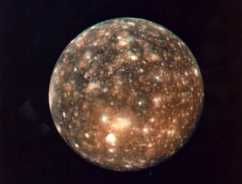This is a drawing of the interior of Europa.
Click on image for full size
Interior of Europa
The diagram to the left shows the possible interior of Europa. The composition of the icy moons is mostly ice, therefore there is probably a small core of rocky material buried inside, covered with ice.
The diagram shows that there may be an ocean of water beneath the surface crust of ice on Europa. If the temperature inside Europa is just right, then there might be water inside. Such an environment might prove to be suitable for life.
You might also be interested in:

Minerals are the building blocks of rocks. There are many different types of minerals. All of them are solid and all are made of atoms of elements. Minerals can grow even though they are not alive. Most
...more
Europa was first discovered by Galileo in 1610, making it one of the Galilean Satellites. It is Jupiter's 4th largest moon, 670,900 km ( miles) from Jupiter. Europa's diameter is about half the distance
...more
Galileo is a spacecraft that has been orbiting Jupiter for eight years. On September 21, 2003, Galileo will crash into Jupiter. It will burn up in Jupiter's atmosphere. The crash is not an accident! The
...more
Amalthea was discovered by E Barnard in 1872. Of the 17 moons it is the 3rd closest to Jupiter. Amalthea is about the size of a county or small state. Amalthea is named after the goat in Greek mythology
...more
Callisto was first discovered by Galileo in 1610. It is the 2nd largest moon in the solar system, and is larger than the Earth's moon. It is about as big as the distance across the United States. Callisto
...more
Measurements by the Galileo spacecraft have been shown that Callisto is the same inside from the center to the surface. This means that Callisto does not have a core at the center. This means that, unlike
...more
Many different types of surface are shown in this picture. In the front is a huge crater, which goes for a long way over the surface. This crater could be compared to that of Mimas. They both show that
...more














